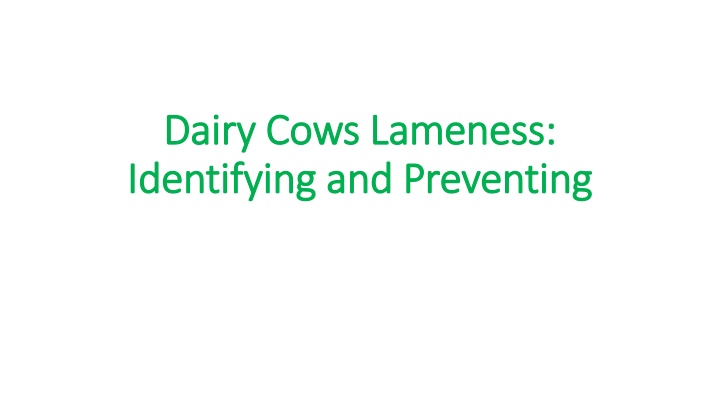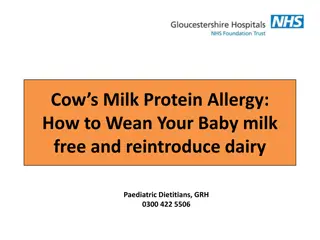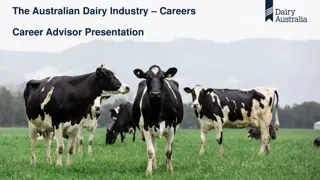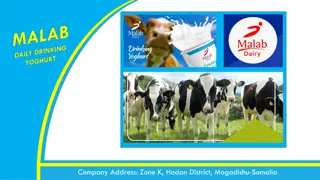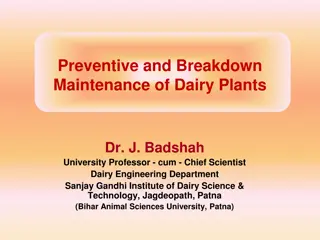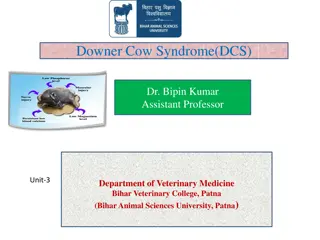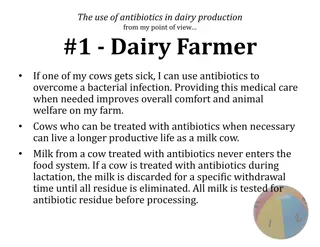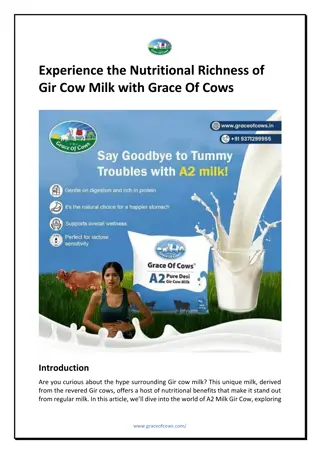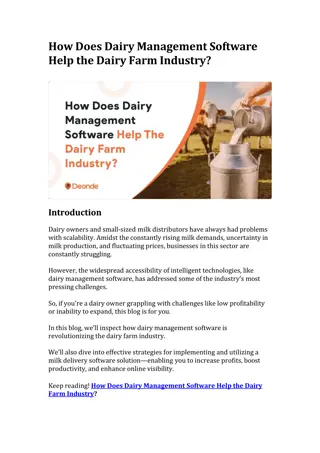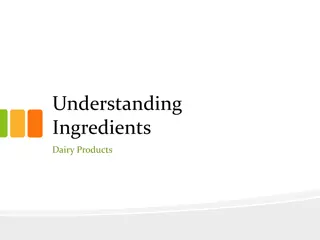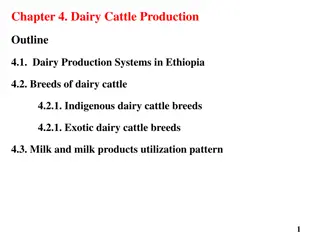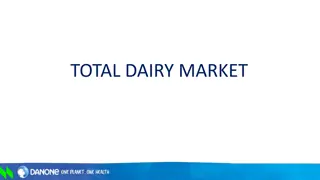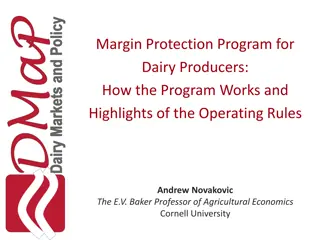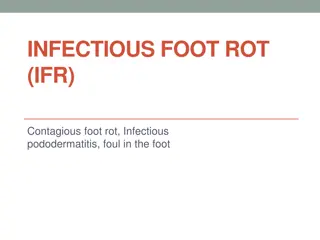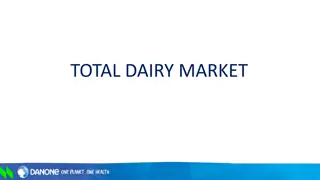Preventing Dairy Cows Lameness - Identifying & Addressing Issues
Lameness in dairy cows can lead to significant milk production losses and decreased reproductive performance. Learn how to identify, prevent, and address lameness issues to ensure the health and profitability of your herd. Explore strategies to assess, treat, and manage lameness causes for optimal cow well-being.
Download Presentation

Please find below an Image/Link to download the presentation.
The content on the website is provided AS IS for your information and personal use only. It may not be sold, licensed, or shared on other websites without obtaining consent from the author.If you encounter any issues during the download, it is possible that the publisher has removed the file from their server.
You are allowed to download the files provided on this website for personal or commercial use, subject to the condition that they are used lawfully. All files are the property of their respective owners.
The content on the website is provided AS IS for your information and personal use only. It may not be sold, licensed, or shared on other websites without obtaining consent from the author.
E N D
Presentation Transcript
Dairy Cows Lameness: Dairy Cows Lameness: Identifying and Preventing Identifying and Preventing
Lameness and Profitability Lameness and Profitability moderately lame cows (cows that walk with short strides and stand with a slightly arched back) produce 4% less milk Severe Lameness (cows have difficulty walking): milk losses increase to 15% lame cows have decreased reproductive performance (reduced estrus expression, suppressed immune system
Milk production losses (Peter Robinson, UC Davis): Locomotion score 2: 2% Locomotion score 3: 4.1% Locomotion score 4: 9.3% Locomotion score 5: 15.2% $90-300 /cow/case : treatment, decreased fertility, milk yield loss and decreased longevity in the herd are all underlying expenses of lameness, not to mention the labor costs associated with treatment. The average cost per case (US$) of sole ulcer, digital dermatitis and foot rot were $240, $150 and $135, respectively (Cha et al., 2010, adjusted for inflation).
Goals Goals Locomotion Score Goals, Standing and Walking, Flat Back 75% Standing, Flat Back, Walking, Arched Back 15% Standing and Walking, Arched Back 9% Standing and Walking, Arched Back, One or More Limbs Favoured 0.5% Standing and Walking, Arched Back, No Weight Bore on a Limb 0.5% Steven Berry, DVM, UC Davis
Identifying Lame Cows Identifying Lame Cows A) Observe group of cows in each pen B) watching cows pass by when they are exiting the parlor or other location that all cows pass by calmly Scale 1 to 3 or 1 to 5 ( 1 being normal and sound, 4-5 bein arched back, barely able to bear weight on the affected limb) C) Take an average: 95% of milking and dry cows to score a 1 or 2 D) Anything below 90-95% requires and action plan
Determining the Cause of lameness Determining the Cause of lameness Before making an action plan, we need to determine the cause(s)preventing lameness Areas to look: Hooves and the kinds of lesions (infectious or non-infectious) Infectious: foot rot and digital dermatitis or hairy heel warts Non-infectious: sole or toe ulcers, thin soles, sole hemorrhages, or white line disease Nutrition and potential incidence of SARA Footings (diet lots and concretes)
Preventing Infectious Lesions Preventing Infectious Lesions Practice Hygiene: Keeping cows hooves dry with a minimal amount of manure improves hoof health. Use footbath routinely (footbath size and placement are important): minimum of 10 long, 19 to 24 , and minimum of 4 deep should be placed in a readily accessible walkway that restricts flow of cattle to one at a time (e.g. parlor exit). Footbath schedule: depends on the hoof cleanliness once a week or twice a month Nutrition: Prevent ruminal acidosis , Check trace minerals and B vitamins in feeds
Preventing Non Preventing Non- -Infectious Lesions Infectious Lesions Hoof trimming schedule: at least once a year and preferably twice a year at dry off and 90-120 DIM moderately or severely lame cows should be trimmed as soon as possible cows should not become lame 3 to 7 days after hoof trimming Holding area & walking surfaces: should be grooved in a diamond pattern to prevent slipping Holding pens should be cleaned after each milking to minimize manure on hooves and allow the holding pen to dry between milkings Freestall comfort: Improper stall size and maintenance leads to more standing and more exposure to manure and wet areas
Preventing Non Preventing Non- -Infectious Lesions Infectious Lesions Transition period: Prevent excessive BCS in close up period Prevent excessive BCS loss in the first 60 DIM (not more than (more than 0. 5 body condition score within 40 DIM) No overcrowding in the fresh pen Nutrition: Keep Rumen pH in check, check for % ruminating cows Proper TMR particle size (prevent sorting) Prevent slog feeding and adjust the ration for proper forage to concentrate ratio Use buffer
